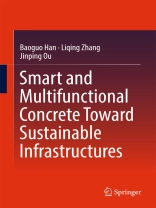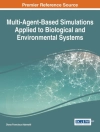This book presents the latest research advances and findings in the field of smart/multifunctional concretes, focusing on the principles, design and fabrication, test and characterization, performance and mechanism, and their applications in infrastructures. It also discusses future challenges in the development and application of smart/multifunctional concretes, providing useful theory, ideas and principles, as well as insights and practical guidance for developing sustainable infrastructures. It is a valuable resource for researchers, scientists and engineers in the field of civil-engineering materials and infrastructures.
Mục lục
Definition and classification of smart/multifunctional concrete.-Self-sensing concrete.- Self-healing concrete.- Self-adjusting concrete.- Self-damping concrete.- Self-cleaning concrete.- Electrically conductive concrete.- Electromagnetic shielding/absorbing concrete.- Energy harvesting concrete.- Light transmitting concrete.- Aircraft arresting concrete.- Other types of smart/multifunctional concrete.- Challenges for development and deployment of smart/multifunctional concrete.
Giới thiệu về tác giả
Baoguo Han received his Ph D in the field of smart materials and structures from the Harbin Institute of Technology, China, in 2005. He is currently a professor of civil engineering in the Dalian University of Technology, China. His main research interests include smart materials and structures, sensors, structural health monitoring, traffic detection, nanotechnology and cement and concrete materials. He is a member of the editorial board of three international journals and has published 1 book, 10 book chapters and more than 100 technical papers. He was invited to the University of Minnesota and has worked as a visiting research scholar there for 3 years. He was also awarded the New Century Excellent Talents in University by the Ministry of Education of China and the First Prize of Natural Science by the Ministry of Education of China.
Liqing Zhang received her M.S. degree in materials science from the Dalian University of Technology, China, in 2015. She is currently pursuing her Ph.D. degree at Dalian University of Technology, China. Her current research interests include cement and concrete composites, smart materials and structures, and nanotechnology. She has published 4 book chapters and 10 published journal papers.
Jinping Ou received his Ph.D. degree from the Harbin Institute of Technology, China, in 1987. He is a professor at both Harbin Institute of Technology and Dalian University of Technology, China. His main research interests include structural damage, reliability and health monitoring, structural vibration and control, smart materials and structures. He has published more than 300 technical papers/reports and four books. He has been awarded the second-level National Awards of Science and Technology Progress twice and the first-level provincial and ministerial Awards of Science and Technology Progress five times. He has been an academician of Chinese Academy of Engineering since 2003, andwas the president of the Chinese Society for Vibration Engineering, the vice-president of the Architectural Society of China, an executive board member at the International Association for Structural Control and Monitoring, as well as the vice-president and fellow of the International Society for Structural Health Monitoring of Intelligent Infrastructure.












